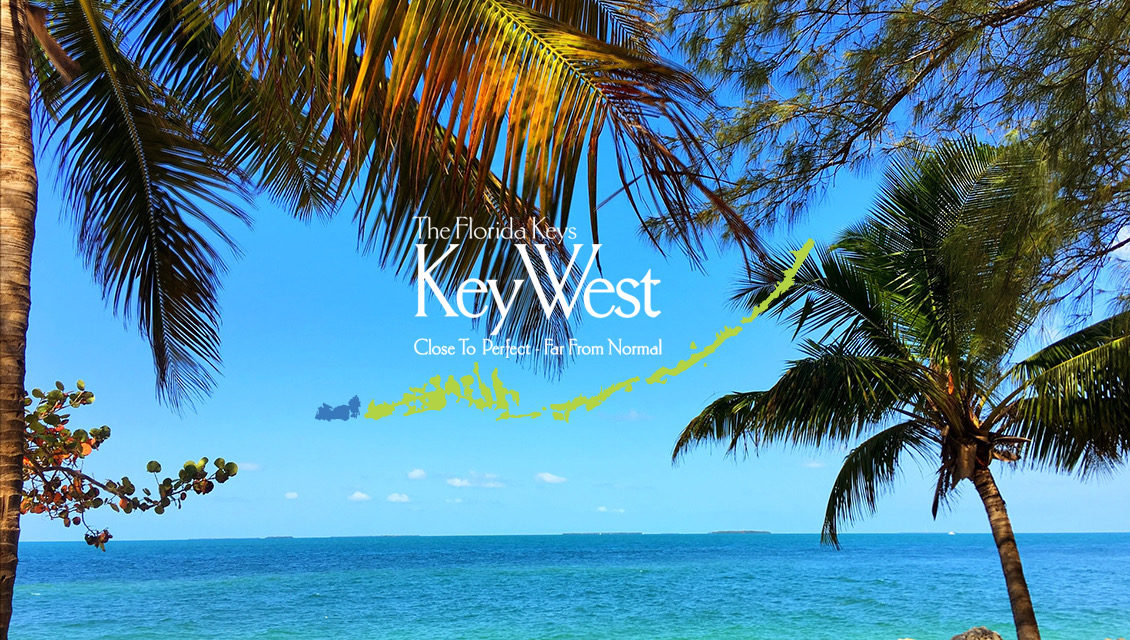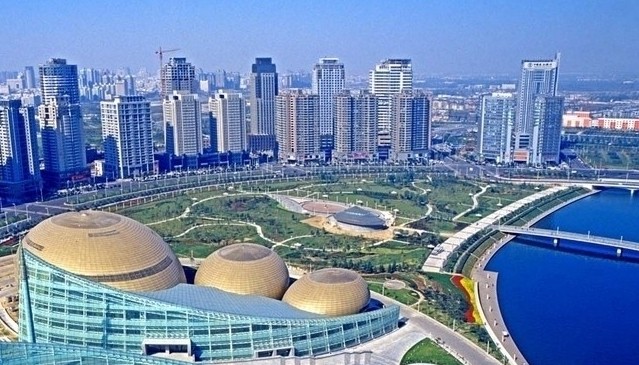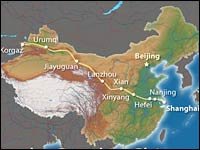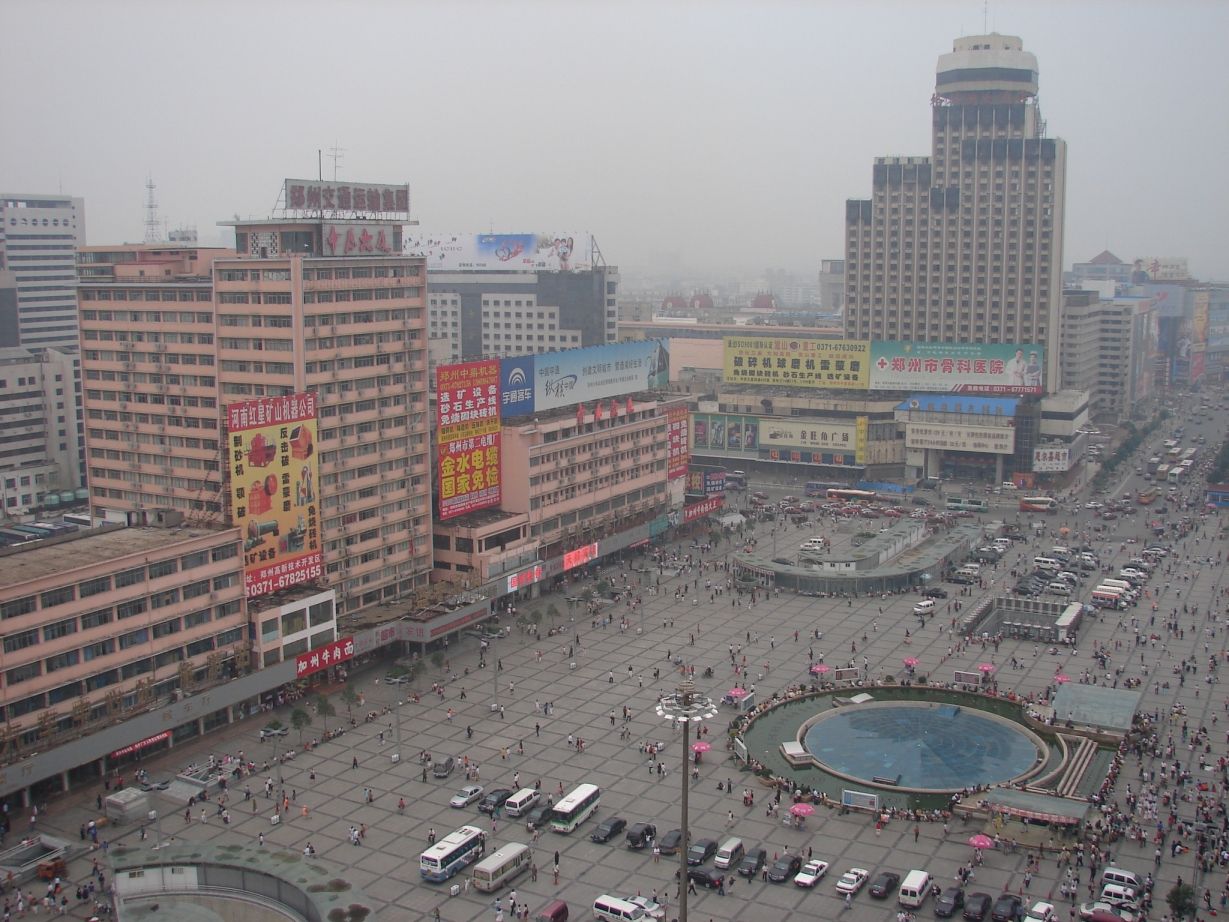Key West, which is celebrating its bicentennial this year, bills itself as “Close to Perfect, Far From Normal.’’ I’m not sure about the perfect part, but it’s definitely not normal.
The southernmost city in the U.S., it’s closer to Havana than Miami. Wild chickens roam the streets, six-toed cats wander around Ernest Hemingway’s former home, and the place once (somewhat jokingly) tried to secede from the U.S. and call itself The Conch Republic.
Eccentricity is a way of life in Key West, which sits at the southern tip of the Florida Keys, a 120-mile chain of islands that stretch from just south of Miami to a point that is roughly parallel to the Bahamas. It’s a mecca for gays, artists, fishermen and outcasts of every variety, not to mention some fabulously wealthy people. (The median listing price for a home is almost $1 million.)
During a recent trip to South Florida, after visiting old friends near Fort Lauderdale and touring the Everglades, Pat and I took a leisurely, two-day drive to Key West on the scenic Overseas Highway. Even without stopping, the 160-mile drive from Miami takes about four hours because of low speed limits (ranging from 35 mph to 55 mph) on the mostly two-lane road, which is often clogged by slow-moving RVs, trucks, motorcycles and bicycles. Trying to pass another vehicle on the Overseas Highway is more dangerous than trying to pass the lead car on the final turn of the Indy 500.
The highway was built along the route of Henry Flagler’s Overseas Railroad, which first connected the mainland to Key West. The railroad, which opened in 1912, was heavily damaged by a hurricane in 1935 and replaced by the highway three years later. There have been many upgrades since, but it’s still the only way to drive to Key West, which is connected to the mainland by 42 bridges.
Our first stop was Key Largo, the first island you reach after leaving the mainland. It’s probably best known as the setting for the eponymous 1948 gangster film starring Humphrey Bogart, Lauren Bacall and Edward G. Robinson. Though the story takes place in Key Largo, it was actually filmed at Warner Bros. Studios in California, except for a few exterior shots taken in the Keys. Today, Key Largo advertises itself as the “Dive Capital of the World’’ and home to the world’s second-largest artificial reef.
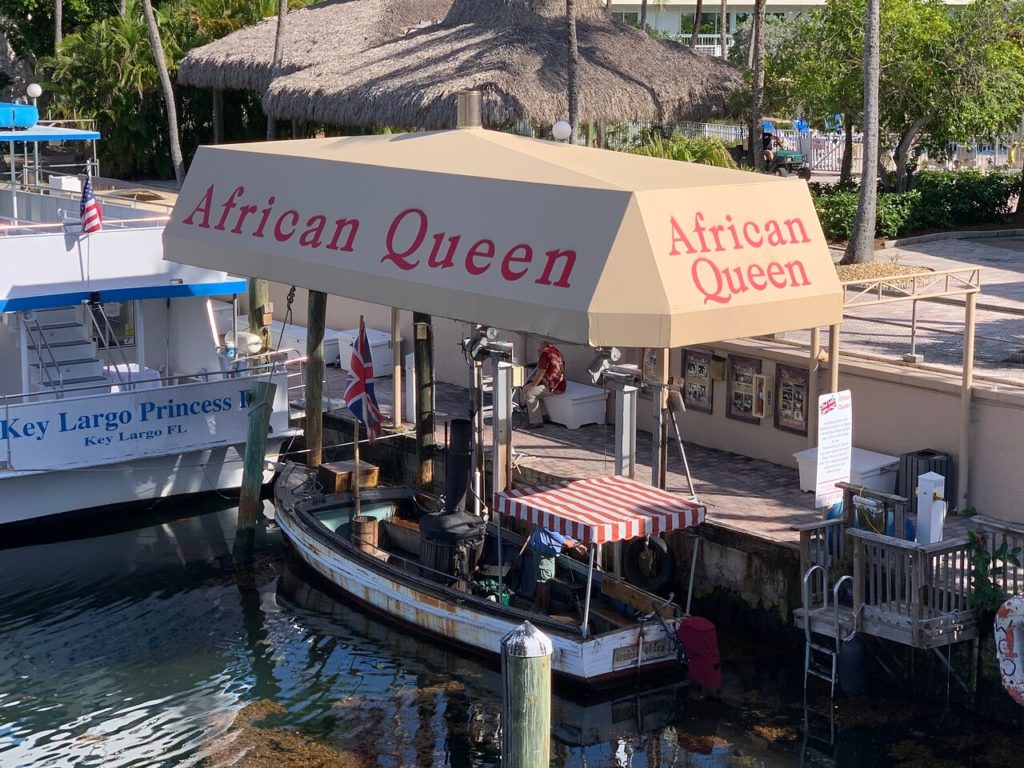
Key Largo also has a connection to another famous Bogart movie, “The African Queen.’’ One of two steamboats used during the filming of the 1951 classic is docked next to the Holiday Inn where Pat and I stayed for one night. Built in England in 1912, it has been restored to look like it did in the movie and is now used for canal cruises and private events. The only thing missing is Bogie lisping, “One thing in the world I hate: leeches. Filthy little devils.’’
Before leaving Miami, we downloaded an iPhone app that narrated the drive to Key West with interesting anecdotes about the towns and sites along the way. So we learned that Ted Williams, Gene Hackman and Clarence Clemons all had homes in the Keys and that the Netflix series “Bloodline’’ was mostly shot in Islamorada, which is also home to the Theater of the Sea marine mammal park, the History of Diving Museum and Betsy, a 30-foot high, 40-foot long fiberglass sculpture of a spiny lobster that sits in front of an arts and crafts center.
Not surprisingly, Betsy is the second-most photographed attraction in the Keys, behind the “Southernmost Point’’ sign in Key West. So yes, we did pose for the obligatory picture in front of the giant, 12-legged lobster, which looked about as appetizing as a moldy Big Mac.

Other stops along the highway included Anne’s Beach, where we strolled along a short boardwalk; Long Key State Park, where we spotted little lizards crawling into dot-sized holes searching for food; and Marathon, a city that got its name from railroad construction workers who complained about their long work hours.
Leaving Marathon, we crossed the Seven-Mile Bridge, which connects the Middle Keys to the Lower Keys. The original bridge, built for Flagler’s railroad, is now only used by pedestrians and cyclists. We traveled on the new bridge, which was finished in 1982, runs parallel to the old bridge and is actually a little shorter than seven miles. Soon we passed by Pigeon Key, where about 400 construction workers lived while building the Overseas Railroad. You can take a ferry to the island and see some of the original buildings, including one that has been transformed into a railroad museum.
A little farther south, we saw a tree rising from the roadbed of the old bridge. Nicknamed Fred, it’s an Australian pine that may have sprouted from the droppings of a passing bird. Every December, locals decorate Fred with lights and ornaments, turning him into a unique Christmas tree rooted in cracked concrete. (A smaller, nearby tree is called Wilma, completing the Flintstones theme.)
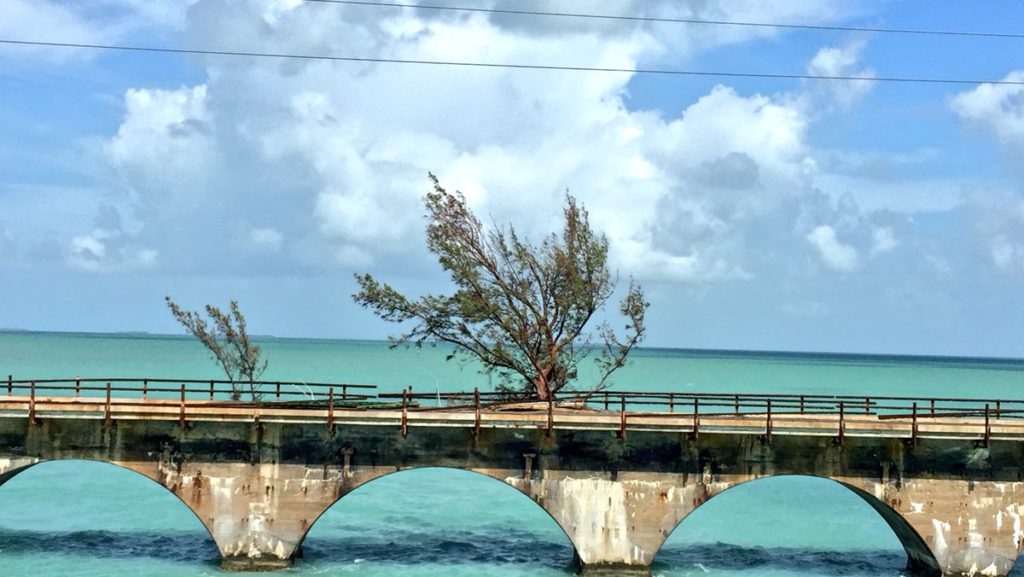
As we neared Key West, we spotted a large white moving object in the sky that clearly wasn’t an airplane or helicopter. A quick Google search determined that it was “Fat Albert,’’ an Air Force surveillance blimp that is frequently misidentified as a UFO by clueless tourists like me.
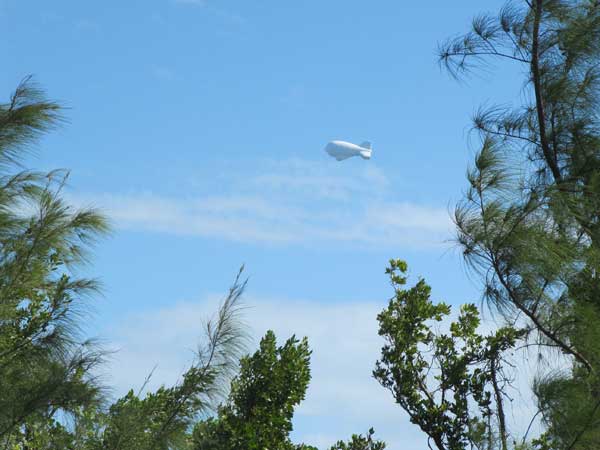
My first impression of Key West wasn’t great. The entrance to the city was a depressing string of fast-food franchises, motels, gas stations and strip malls. And the main drag, Duval Street, was even worse: rows of crowded bars, overpriced restaurants, tacky souvenir shops and touristy art galleries. But with just a little searching, there are many gems to be found, starting with the Hemingway House & Museum.
The huge, two-story house, which was a gift from Hemingway’s father-in-law, is surrounded by a red brick wall that was built to thwart gawking tourists who were forever trying to get a glimpse of the famous writer who lived in Key West with his then-wife Pauline throughout the 1930s.

For $17 (cash only), you can get a guided tour of the home, which features a 60-foot long swimming pool that cost $20,000 to build in 1938, the equivalent of about $400,000 today. Hemingway complained that the pool, which was his wife’s pet project, was bankrupting him and supposedly flung his “last penny’’ at her on the half-built patio. The story may be apocryphal, but there’s a penny buried in the cement to memorialize the supposed incident.
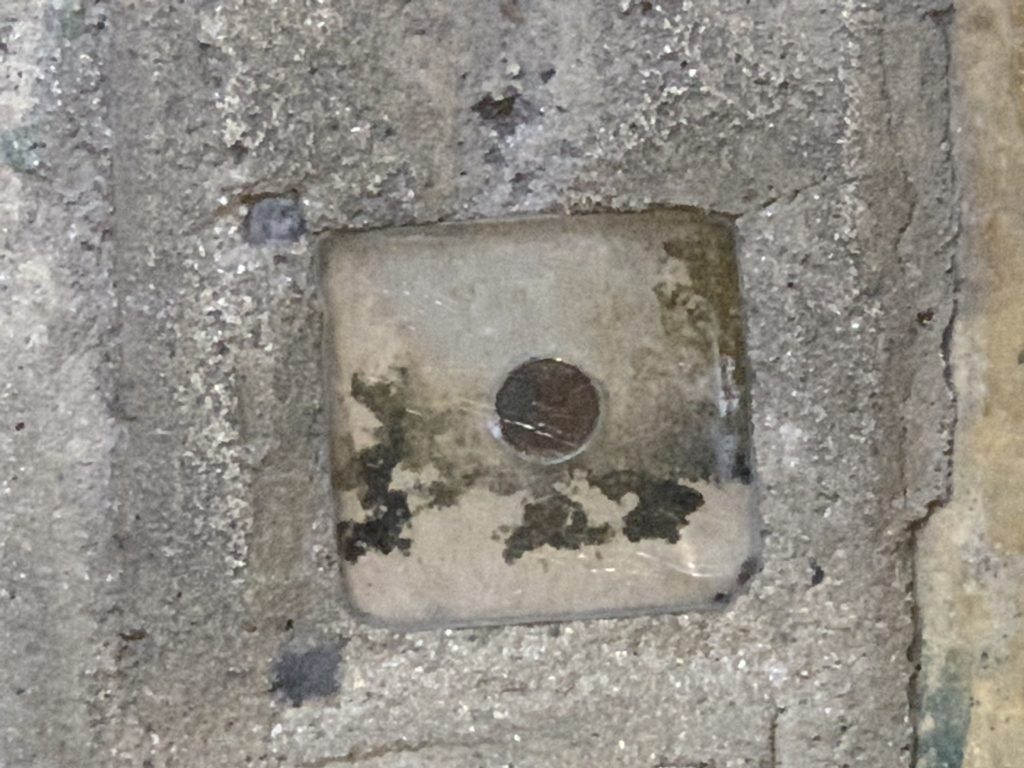
Hemingway was a cat lover, and many of his were the six-toed variety. Today, their polydactyl descendants are among the 58 cats that freely roam the property. Our guide told us that they are all well fed and that a veterinarian comes to the house every week to check on their health. (I’d like to borrow their health insurance plan.)

After Hemingway and Pauline separated in 1939, he left Key West to live in Cuba with the woman who became his third wife, journalist Martha Gellhorn. When we visited his Cuba home outside Havana in 2019, we weren’t allowed inside, so we could only see the rooms by peeking through the windows. If Hemingway were alive today, he’d probably build a wall around that house too.
One of Hemingway’s favorite haunts in Key West was Sloppy Joe’s, a bar run by his close friend, former rumrunner and fishing companion Joe Russell. When the landlord tried to raise Russell’s rent by $1 in 1937, he stormed out and moved the bar across the street. Legend has it that the customers simply picked up their drinks and stools and carried them over to the new place.
Today, both sites lay claim to Hemingway’s legacy. The original building is now called Captain Tony’s, while the newer one is still called Sloppy Joe’s. Both bar/restaurants are plastered with Hemingway memorabilia and, on the day we stopped by in the middle of the Omicron outbreak, both were packed with non-masked customers who apparently had never heard of COVID. (In a related matter, Pat and I were horrified that several shops on Duval Street were selling “Let’s Go Brandon’’ T-shirts and hats. We also saw a heavily tattooed biker wearing a shirt that boasted, “I Have No Problem With Violence.’’)
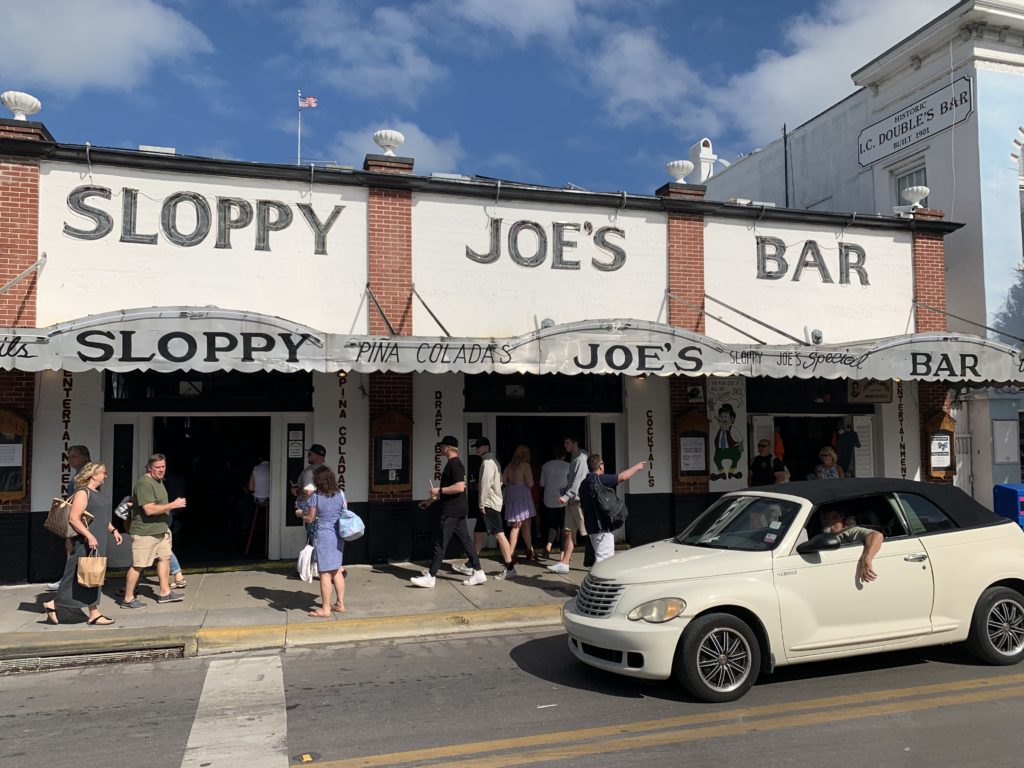
As you walk around Key West, you’ll see roosters and hens on the sidewalks, crossing the street or even perched on cars. I’ve read a lot of explanations for these “gypsy chickens,’’ but the two most popular are these: After Key West was connected to the mainland, people didn’t need their chickens for food anymore, so they freed them from their coops. And once cockfighting was outlawed in the 1970s, the rooster owners released their fighting birds into the wild. As a result, in Key West, asking why the chicken crossed the road is more than a theoretical question.
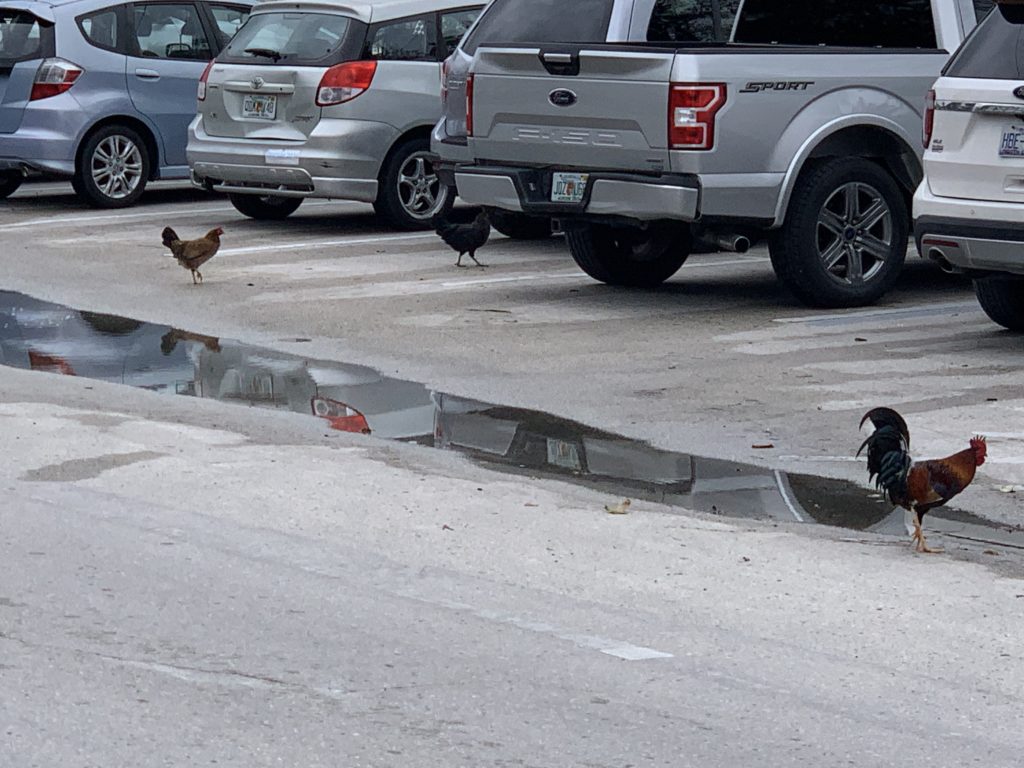
During a trolley tour, we passed by some other Key West landmarks including Casa Marina Resort (once a hotspot for celebrities such as Gregory Peck, Rita Hayworth and Ethel Merman); the Little White House (Harry Truman’s vacation home during his presidency); and the First Flight Restaurant & Brewery (the original home of Pan American Airways, which operated the first scheduled international flight in the U.S., from Key West to Havana in 1927).


Of course, you can’t visit Key West without eating Key Lime pie. We found a delicious variation at Kermit’s Key West Key Lime Shoppe, where they sell a frozen slice of Key Lime pie dipped in dark chocolate, served on a popsicle stick. The other must-have delicacy in Key West is seafood, which was probably swimming in the ocean hours earlier. We had a decadent meal at The Stoned Crab, a waterfront restaurant where we shared a “two-tower’’ platter that included almost every type of fish and seafood imaginable. They even give you baseball-type cards featuring the local fishermen who catch the stuff. The only downside was the dish’s astronomical price of $175, though I should explain that prices for everything in Key West were extremely high due to inflation, prime tourist season and, I think, businesses trying to make up for losses suffered during COVID shutdowns.

We wanted to stand next to the sign marking the southernmost point in the U.S., but when we got there the line of tourists waiting to take a picture beside the concrete buoy was so long that we just walked around the neighborhood, where almost every building and business is described as “southernmost.’’ We also skipped the nightly arts festival at Mallory Square, where large crowds celebrate while gazing at beautiful sunsets.
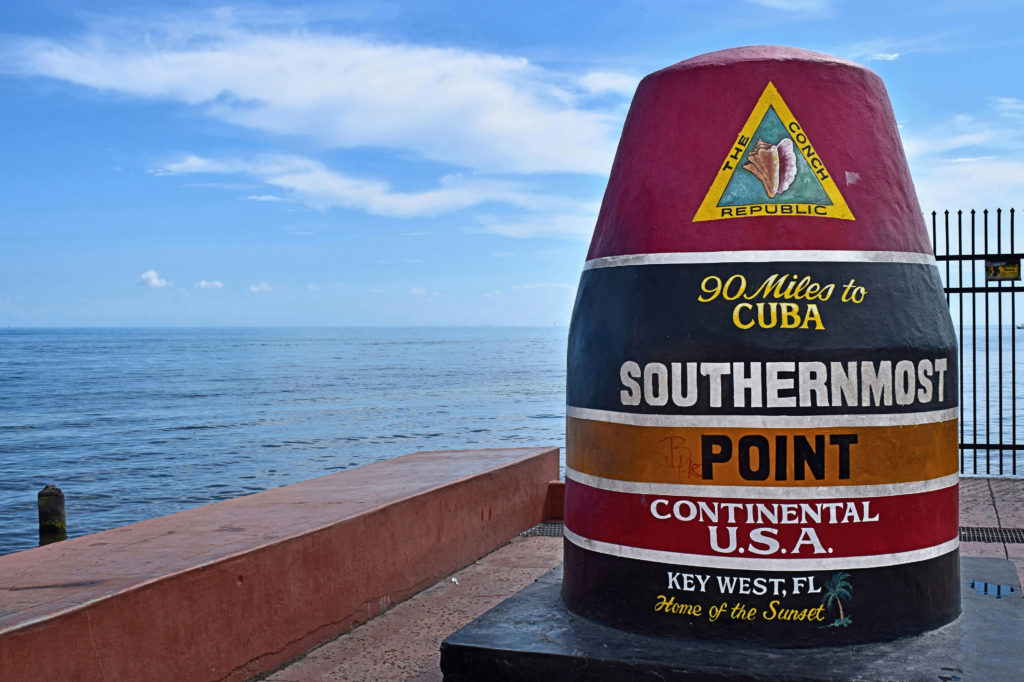
The buoy is considered to be the southernmost point of the continental landmass of the United States. From here it is about 145 km to Cuba.
Before leaving town, we visited the old Custom House, a 131-year-old, towering red brick building that houses a wonderful museum detailing the history of Key West. Our final stop was the Key West Butterfly & Nature Conservatory, where almost 100 types of butterflies and birds fly freely in a climate-controlled glass enclosure. One of the birds dropped a slimy white present on my shirt, leaving me with another memorable reminder of our trip.

